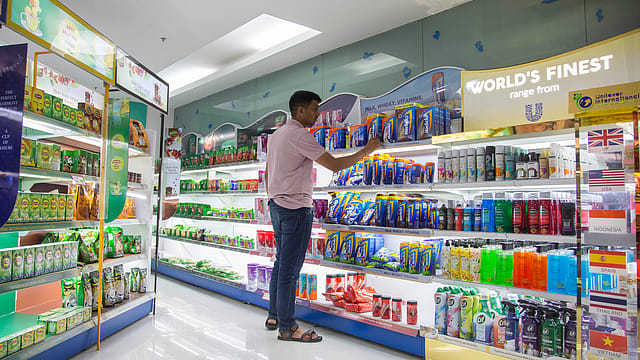Urban demand revival lifts staples; FMCG top-line growth at multi-quarter highs
ADVERTISEMENT

Urban demand for consumer staples is beginning to stabilise after a prolonged slowdown, with several large fast-moving consumer goods (FMCG) players reporting multi-quarter highs in revenue growth. According to a Nuvama Institutional Equities consumer report, easing inflation, rate cuts, and early festive stocking are helping drive this recovery, even as rural demand continues to outpace urban.
“Urban demand is showing early revival with sequential recovery across categories. The worst seems behind for staples, including in general trade,” said Abneesh Roy, executive director, Nuvama Institutional Equities. He noted that companies like Marico and Britannia have already seen strong urban traction, supported by project-led initiatives and better distribution execution.
The earnings season for Q1FY26 reflected broad-based momentum. Hindustan Unilever reported its strongest revenue growth in seven quarters, while Marico’s India business touched a 16-quarter high in both revenue and volume growth. ITC and Pidilite logged their best top-line performance in 11 quarters, Britannia posted its highest growth in nine quarters, and Godrej Consumer recorded its best in eight quarters. Nestlé and United Breweries too hit multi-quarter highs.
December 2025
The annual Fortune 500 India list, the definitive compendium of corporate performance, is out. This year, the cumulative revenue of the Fortune 500 India companies has breached $2 trillion for the first time. Plus, find out which are the Best B-schools in India.
Inflation, at an eight-year low, has been a crucial enabler. July CPI eased to 1.55% year-on-year, with food inflation turning negative, led by a steep fall in vegetable and pulse prices. “With inflation cooling off and rural inflation even lower than urban, consumption tailwinds are visible. Rural remains robust, but now we are seeing green shoots in urban markets too,” Roy added.
The report highlights that on a value basis, the consumer sector grew 13.9% YoY in Q1FY26 versus 11% in Q4FY25. Overall volume growth stood at 6% YoY, with urban volumes expanding 4.6% and rural growing 8.4%. Smaller towns are driving the urban resurgence, while metros continue to see a drag from channel shifts.
Company-level data underscores the breadth of the recovery. Marico’s revenue rose 23.3% YoY, ITC grew 20.6% led by cigarettes, agri and FMCG, while Adani Wilmar’s agri sales were up 20.4%. CCL Products reported a 36% jump in revenue on the back of premiumisation. Britannia’s ~10% growth marked a nine-quarter high, and Nestlé reported its strongest five-quarter performance.
Roy noted that the demand revival is also being accompanied by more measured pricing. “Mild positive pricing should continue in FY26 as raw material costs have corrected. Palm oil is down 15%, coffee by 30%, and tea has also moderated, giving companies more flexibility to push volumes,” he said.
Margins, however, remain under some pressure. The report points out that higher costs of tea, palm oil and coffee weighed on profitability in Q1, though correction benefits should flow from Q2 onwards. FMCG players are also expected to gradually ramp up advertising spends after keeping them tight in Q1, a sign of confidence in sustained recovery.
“Multi-quarter high growth across staples and discretionary categories shows demand fundamentals improving. With both urban and rural contributing, we expect momentum to continue into the festive season,” Roy said.
